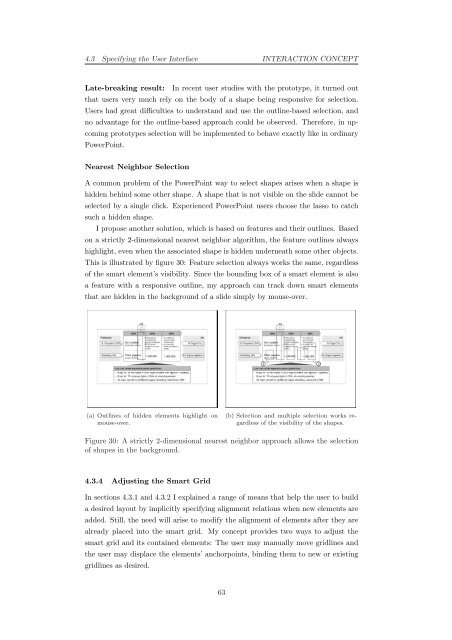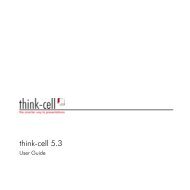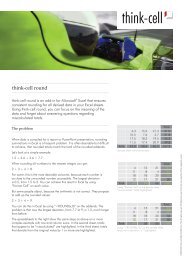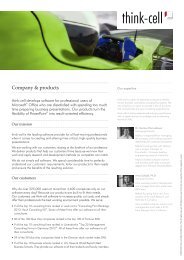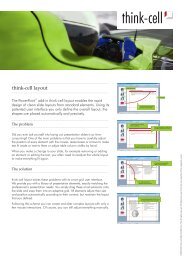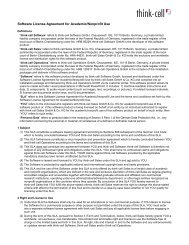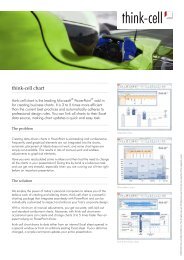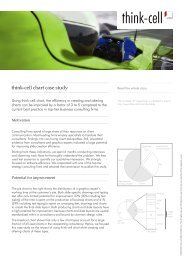think-cell technical report TC2003/01 A GUI-based Interaction ...
think-cell technical report TC2003/01 A GUI-based Interaction ...
think-cell technical report TC2003/01 A GUI-based Interaction ...
You also want an ePaper? Increase the reach of your titles
YUMPU automatically turns print PDFs into web optimized ePapers that Google loves.
4.3 Specifying the User Interface INTERACTION CONCEPT<br />
Late-breaking result: In recent user studies with the prototype, it turned out<br />
that users very much rely on the body of a shape being responsive for selection.<br />
Users had great difficulties to understand and use the outline-<strong>based</strong> selection, and<br />
no advantage for the outline-<strong>based</strong> approach could be observed. Therefore, in up-<br />
coming prototypes selection will be implemented to behave exactly like in ordinary<br />
PowerPoint.<br />
Nearest Neighbor Selection<br />
A common problem of the PowerPoint way to select shapes arises when a shape is<br />
hidden behind some other shape. A shape that is not visible on the slide cannot be<br />
selected by a single click. Experienced PowerPoint users choose the lasso to catch<br />
such a hidden shape.<br />
I propose another solution, which is <strong>based</strong> on features and their outlines. Based<br />
on a strictly 2-dimensional nearest neighbor algorithm, the feature outlines always<br />
highlight, even when the associated shape is hidden underneath some other objects.<br />
This is illustrated by figure 30: Feature selection always works the same, regardless<br />
of the smart element’s visibility. Since the bounding box of a smart element is also<br />
a feature with a responsive outline, my approach can track down smart elements<br />
that are hidden in the background of a slide simply by mouse-over.<br />
(a) Outlines of hidden elements highlight on<br />
mouse-over.<br />
(b) Selection and multiple selection works regardless<br />
of the visibility of the shapes.<br />
Figure 30: A strictly 2-dimensional nearest neighbor approach allows the selection<br />
of shapes in the background.<br />
4.3.4 Adjusting the Smart Grid<br />
In sections 4.3.1 and 4.3.2 I explained a range of means that help the user to build<br />
a desired layout by implicitly specifying alignment relations when new elements are<br />
added. Still, the need will arise to modify the alignment of elements after they are<br />
already placed into the smart grid. My concept provides two ways to adjust the<br />
smart grid and its contained elements: The user may manually move gridlines and<br />
the user may displace the elements’ anchorpoints, binding them to new or existing<br />
gridlines as desired.<br />
63


